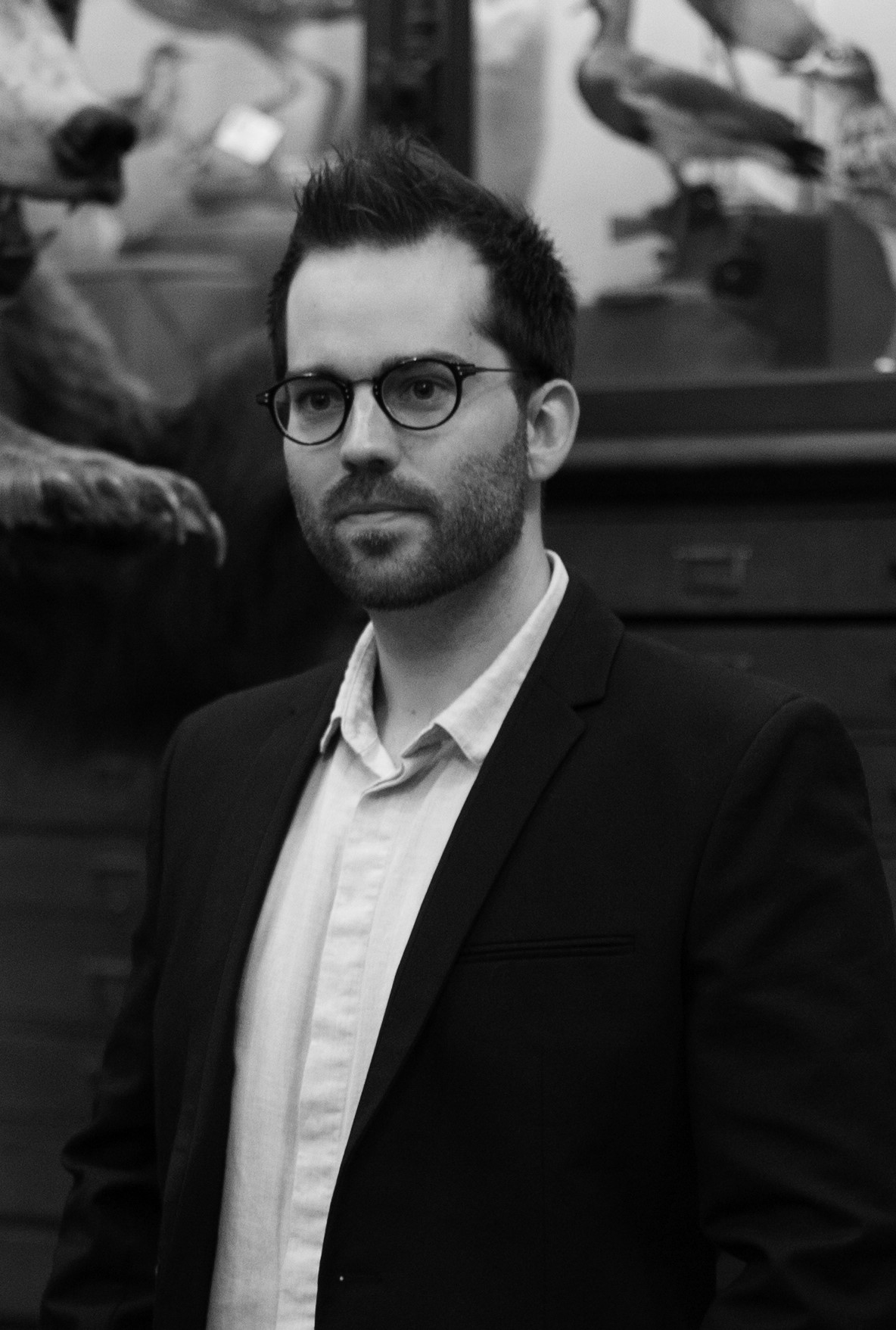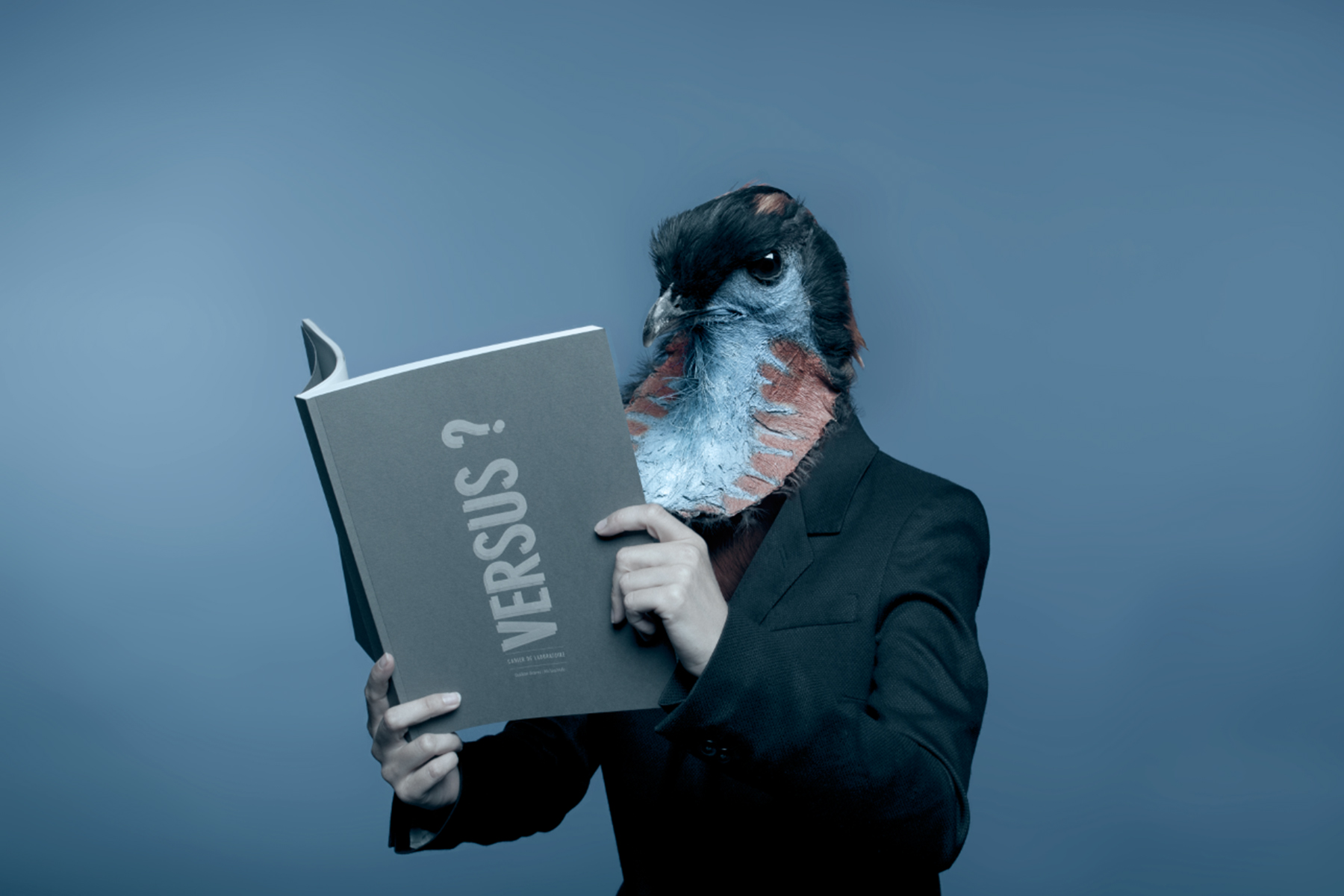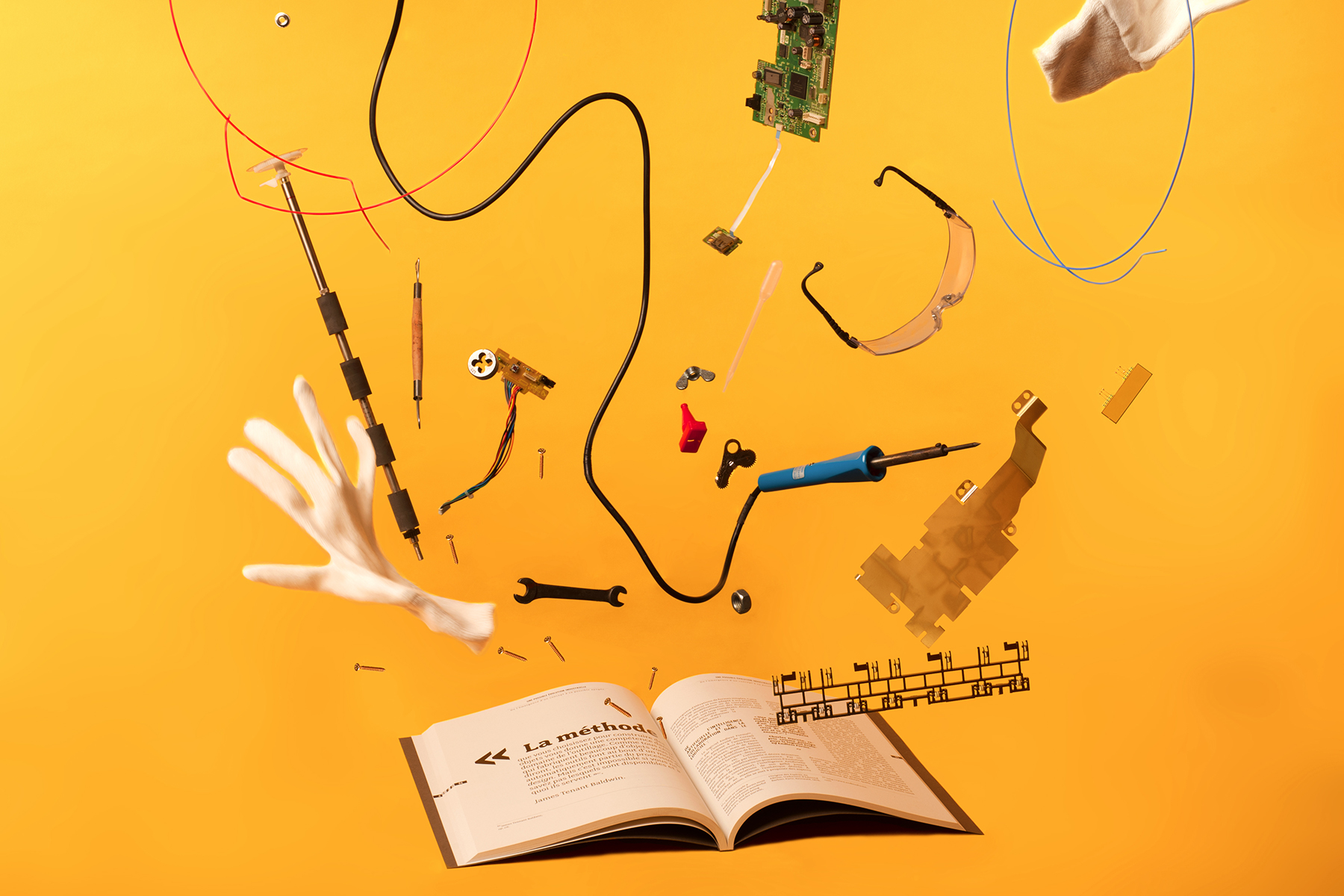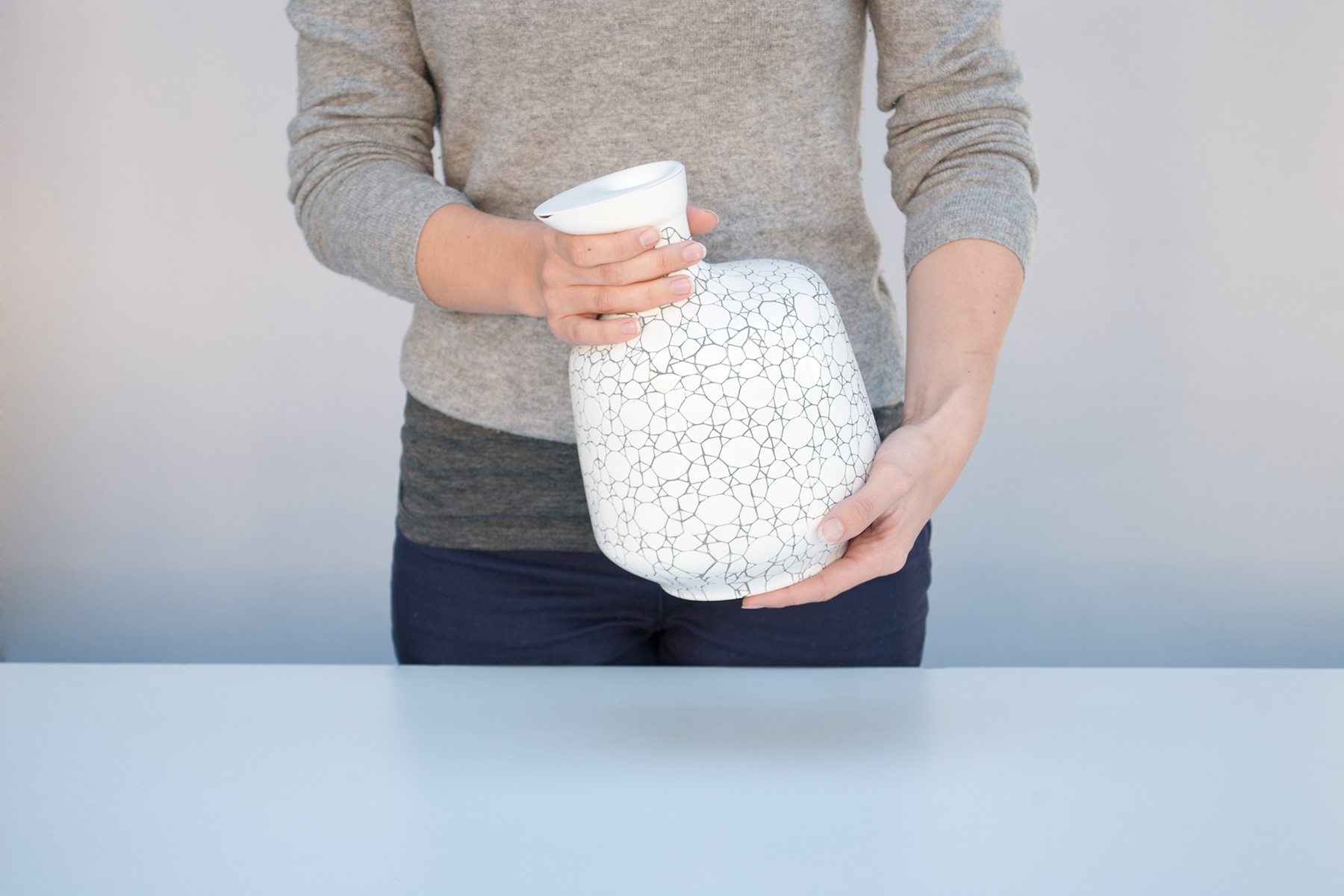
Guillian Graves
Founded 2 years and a half ago by Guillian Graves, Big Bang Project proposes to anticipate the impact of tomorrow’s products and services by adopting an approach that closely links science, innovation research and design. To do this, the team, composed of designers and biologists, works hand in hand with large groups and research laboratories, from design to production, to bring out innovative and bio-inspired solutions, which will better suit to a future and more responsible world. This new methodology draws a bridge between the background and the form by opening a dialogue between disciplines that are a priori remote in the process of conception and creation. Guillian Graves answered our questions.
Hello Guillian,
Why was it important for you to go so far in integrating research and science in the approach of your agency?
Specialized in biomimetism and bio-inspiration for almost ten years, my approach is a transdisciplinary one. It stands at the intersection of design and life sciences. I seek to study and to inspire of nature (micro-organisms, plants, animals, mushrooms, ecosystems) which has been able to adapt and evolve since 3.8 billion years, to imagine innovations which are more respectful of the environment and that would make it possible to face the great challenges of tomorrow.
To develop these activities, I founded Big Bang Project, an agency using research and innovation to design. Our agency also integrates a doctorate in biology and collaborates daily with departments of primary or applied research of our scientific and industrial partners. Bio-inspired habitat, energy, health, nutrition, mobility, sport, space, etc… our collaborations change according to projects and themes explored.
Depending on the issue, our bio-inspired solutions can be embodied in new products, services, experiences, materials, tools, methods, spaces, organizations typologies, etc. We therefore intervene very early in the innovation process. The topics we cover can be proposed by our partners – from large groups to research centers – as coming directly from our agency.
Opportunities for innovation through bio-inspiration are significant, but are dependent on the production of knowledge, the development of new tools and new methods to explore the biological data identified as raw material for the design of bio-inspired artefacts. My team is therefore working to produce this knowledge, methods and tailor-made tools to guide research and creation of sustainable innovation, design and bio-inspiration.
I also teach this unique approach to research and innovation through design and bio-inspiration at ENSCI-Les Ateliers, where I am a teacher-researcher, a member of the Research Center in Design and Head of the Nature-Inspired Design Master of Science, and at Sciences Po Paris.

Versus, collaborative essay co-authored by Guillian Graves and Michka Mélo
How do you participate in designing a productive and responsible creation industry? What kind of technologies are involved in your productions? Are all of them usable in an ecological perspective?
We consider projects as challenges. They can be the consequence of environmental, climatic, societal, cultural, economic, technical issues. Using a rigorous methodology, in-depth knowledge (scientific literature, databases, meeting of experts and specific tools, tools for searching the biological data combined with design tools), we will identify in the living new ways to respond to the identified challenges.

Even if the conception of sustainable innovation is inspired from biological models and great principles conferring to nature its durability, it is not true that every bio-inspired innovation imagined is more sustainable.
We differentiate “biomimetism” and “biomimetics” or “bionics” because the tools are similar but the aims are different. “Biomimetics” or “bionics” are specific approaches of the conception by bio-inspiration, aiming to generate innovations. On the other hand, biomimetism is an approach to eco-design through bioinspiration also aiming to generate innovations, but also seeking the sustainability.
Biomimetism borrows knowledge, methods and tools from the life sciences, from the fields of design and eco-design. Like any approach, technology or tool, the purpose of these bio-inspired approaches will depend on the intentions of the one who will use them. The real underlying question is the world we want to build from observing this equally powerful and surprising nature.
How was the positioning of your agency welcomed by the professional circles that you bring together when you founded it ? Have you noticed a change in thought patterns for 2 years?
Concomitantly to the citizens’ growing awareness to environmental and climatic issues, regulations are becoming increasingly restrictive for companies that must continue to innovate. Biomimetism is an extremely positive way to reconcile Innovation and Sustainable Development. In fact, our approach has been very well received in recent years. The proof is, our work has been presented at more than 80 conferences in Europe and the United States, and in 24 exhibitions around the world – including one at the Centre Pompidou in 2019 for the Mutations / Creations III – La Fabrique du Vivant exhibition, 11 documentaries and TV and radio reports, 36 books and magazines.
This growing interest for the topic bring the agency and the network of o players for biomimetism, expanding day by day, to structure and agree on methods, tools, savoir-faire and ethic values to drive.
It has made the government to elaborate an ethic regulation framework for the biomimetism, in order to limit the emergence of players likely to impair the purposes of this approach to perform some “green washing”.
Is the link between science and design more spontaneous today or is it necessary to establish an innovative communication method to talk with your clients ?
This dialogue is subjected to the right development of new tools and new methods created by Big Bang Project, and also the ability to adapt them to circumstances we dive in – large groups, minor companies, start-up, laboratory and partner research centers – considering their historical and cultural diversity, changing from one environment to another.
Scientists, engineers and designers do not share the same cultures, methodologies, tools, languages, locations, time and project objectives, among other aspects. The good transition from science to design and from design to science is thus correlated with the overcoming of cultural, structural, managerial, temporal, semantic, semiological or even philosophical barriers that compartmentalize the disciplines involved in this process of bio-inspiration.
This dialogue is therefore subject to the development of new tools and internal methods by Big Bang Project’s team, as well as the ability to adapt to the contexts in which we implement them – large groups, SMEs, start-ups, laboratories and research centers – and taking into account their historical and cultural specificities, which vary from one setting to another.
What future projects or development for Big Bang Project ?
In addition to the research and innovation projects we are carrying, we are developing an educational program. On the one hand, we seek to raise awareness to the current environmental and climatic problems in industrial and scientific audiences as in mainstream culture. On the other hand, we try to diffuse methods and tools we develop to them to face these challenges thanks to bio-inspiration.

Nautile, low carbon kettle
In this purpose, we will launch a collection of books called Bio – Graphies in the first quarter of 2020. Their ambition is to give readers the keys to decrypt biological strategies to inspire sustainable innovations. The first book in the collection will be dedicated to the discovery of amazing species in the shark family, which will inspire us to design bio-inspired innovations.
In addition, I am fortunate to have conceived and taken responsibility for the first degree in Biomimetism, in the form of an International Master of Science named Nature-Inspired Design. It will open in January 2020 at the National School of Industrial Design (ENSCI – Les Ateliers) and will be missioned to train the first generations of managers (scientists, engineers and creative) to lead biomimetism projects.
We are also working for an upcoming development of Big Bang Project in the USA, as well as the reinforcement of internal datamining tools of the biologic data thanks to digital technologies.
Thank you Guillian for your answers !
